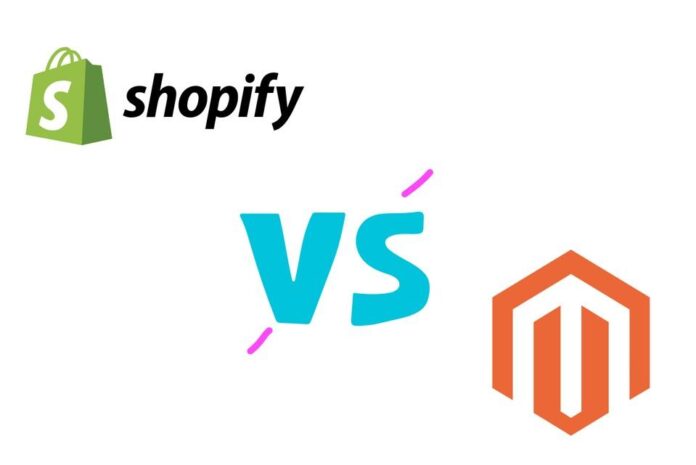Magento and Shopify are both e-commerce platforms. These two platforms have their own unique features. It can make it difficult for a store owner to choose the right platform for their online store.
Magento is the best eCommerce platform for those who are looking for a more customizable and enterprise-level solution that can handle more complex requirements. Shopify is the best eCommerce platform for those who want to start an online store. They need a reliable, scalable, and secure platform.
In this article, we will compare Magento vs Shopify to help you make a smarter decision about which platform to use.
Ease of Use
Magento and Shopify are two of the most popular eCommerce platforms on the market. But, Shopify is much more user-friendly than Magento, making it easier to create a store and maintain your website.
Shopify provides you with an intuitive & powerful drag-and-drop builder. You can create your store and make edits by simply moving elements around the webpage to your liking. This visually stimulating platform is perfect for anyone who is looking for simplicity and no coding knowledge.
Magento is a powerful eCommerce platform but maybe not the best for total beginners. You can hire Magento developers to build the store for you.
Available Themes, Apps, and Add-Ons
Shopify provides a vast library of themes, with many free options. Shopify themes are comparatively more expensive than Magento themes, which range from $180 to $350 per theme.
Custom themes in Magento can provide businesses with a unique and customizable website, they can cost $59 to $200. The average cost for a ready-made Magento theme is $80.
Shopify’s App Store with more than 1200 tools is the latest way to supercharge your business. Browse through the store and find a package that fits your needs, whether it be for email marketing, shipping, social media advertising, or anything else.
Magento is an open-source eCommerce solution for companies to use and customize. The Magento Marketplace has a wide variety of extensions to choose from, including over 2,000 that are completely free.
Payment Processors and Transaction Fees
Integrating different payment processors into your store can help increase sales and profits, as well as improve customer satisfaction. The store owner can easily connect the payment processor to their shop in just a few clicks both in Magento and Shopify platform
However, Shopify Payments is not available in all regions and comes with a transaction fee imposed by Shopify. This can be an issue for businesses that rely on international or domestic sales. One way to circumvent this issue is to use one of the 100+ supported payment gateways that are included with Shopify.
It is becoming increasingly common for different gateways to come up with their versions of new payment methods. Some notable ones are PayPal, Stripe, Amazon Pay, and Apple Pay.
Magento is a scalable, open-source eCommerce platform that supports over 150 payment gateways. However, many of these are aimed at large businesses such as WorldPay and lack the flexibility needed for small to medium-sized enterprises.
Magento vs Shopify: Which One to Choose?
The choice between Magento and Shopify largely depends on the type of business. You have your priorities for your eCommerce store. If you are looking for a platform with more payment options, themes, and add-ons Magento might be the better option for you. But if you want to save time on developing, or a better scalable business then Shopify might be better suited for your needs.
